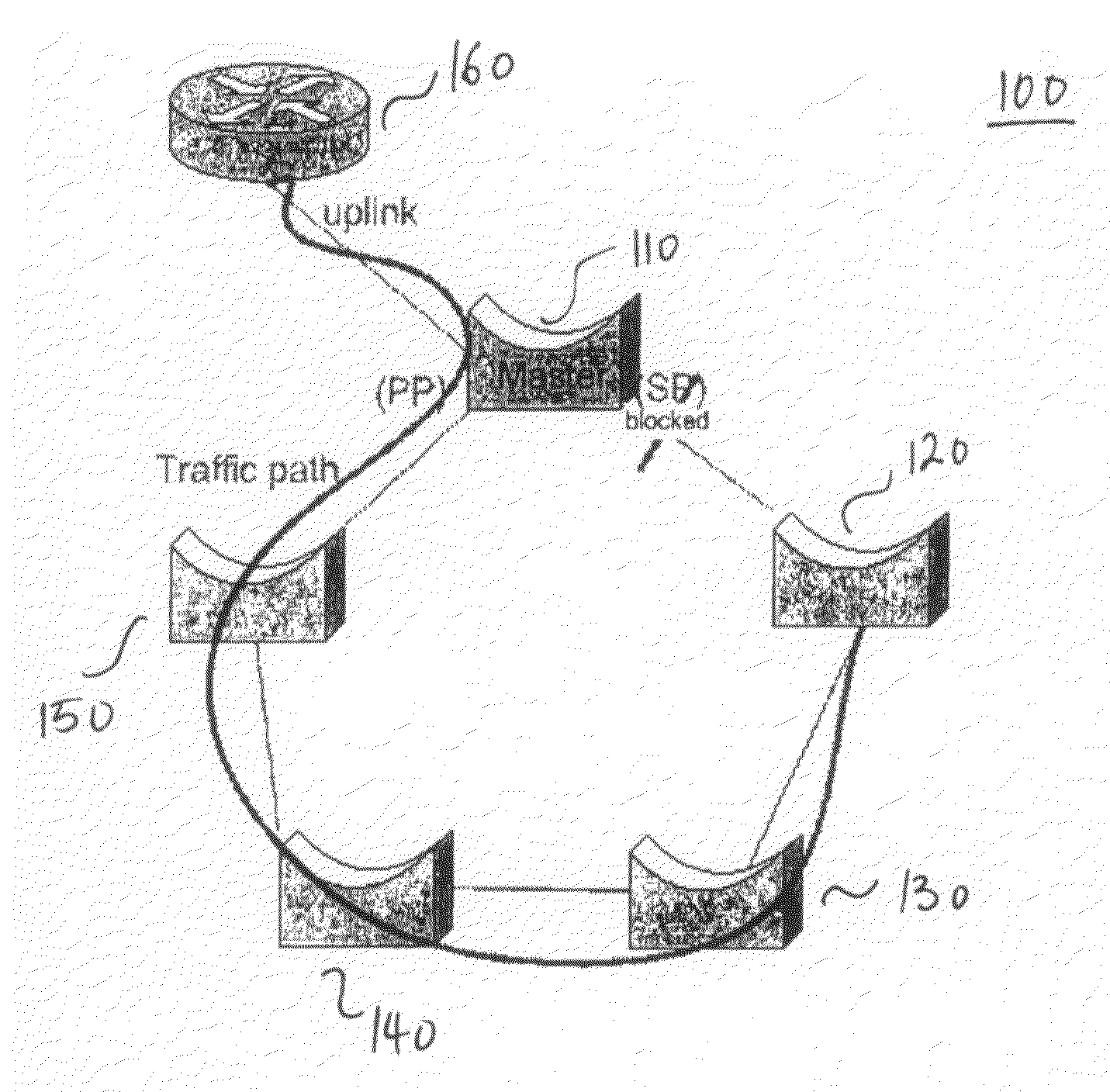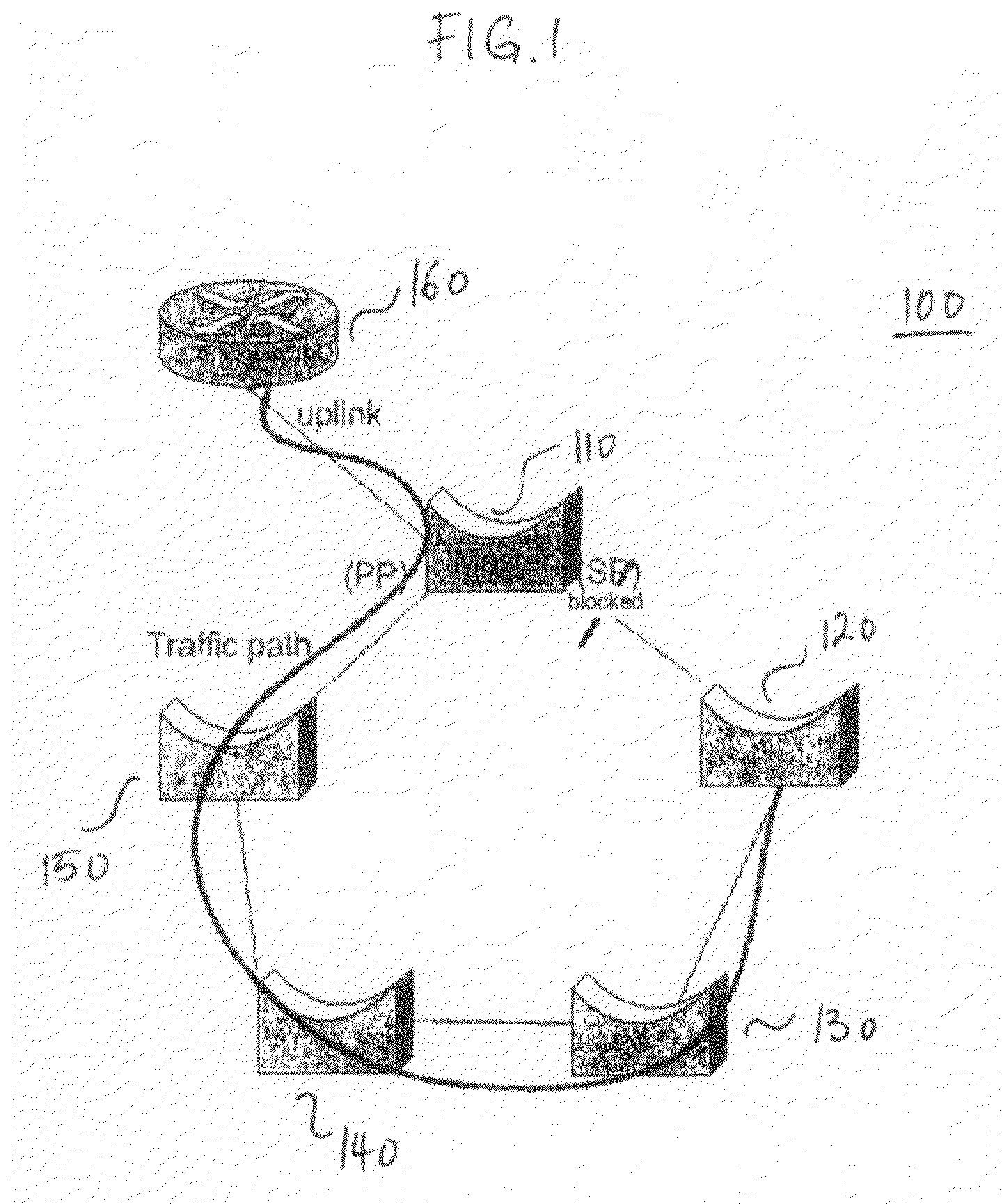Method and system for network recovery from multiple link failures
a network recovery and multiple link technology, applied in data switching networks, instruments, frequency-division multiplexes, etc., can solve problems such as unreliable self-recovery, failures and recovery, and failures of ethernet-based network communications of today's subscribers, and achieve the effect of not being able to make failures and recovery unnoticeable to subscribers
- Summary
- Abstract
- Description
- Claims
- Application Information
AI Technical Summary
Benefits of technology
Problems solved by technology
Method used
Image
Examples
Embodiment Construction
[0023]For a more complete understanding of the present invention, the needs satisfied thereby, and the objects, features, and advantages thereof, an illustration will first be provided of an exemplary EPSR Ethernet-based network recovery from a single link failure, and then an illustration will be provided of an exemplary EPSR network recovery from multiple link failures.
Exemplary Network Recovery From Single Link Failure
[0024]An exemplary EPSR Ethernet-based network recovery from a single link failure will now be described in more detail with reference to FIGS. 1-4, like numerals being used for like corresponding parts in the various drawings.
[0025]FIG. 1 illustrates the operation of an exemplary EPSR network in a normal (non-failed) state. An existing EPSR network 100, shown in FIG. 1, includes a plurality of network elements (interchangeably referred to herein as “nodes”) 110-160, e.g., switches, routers, and servers, wherein each node 110-160 includes a plurality of ports. A sin...
PUM
 Login to View More
Login to View More Abstract
Description
Claims
Application Information
 Login to View More
Login to View More - R&D
- Intellectual Property
- Life Sciences
- Materials
- Tech Scout
- Unparalleled Data Quality
- Higher Quality Content
- 60% Fewer Hallucinations
Browse by: Latest US Patents, China's latest patents, Technical Efficacy Thesaurus, Application Domain, Technology Topic, Popular Technical Reports.
© 2025 PatSnap. All rights reserved.Legal|Privacy policy|Modern Slavery Act Transparency Statement|Sitemap|About US| Contact US: help@patsnap.com



